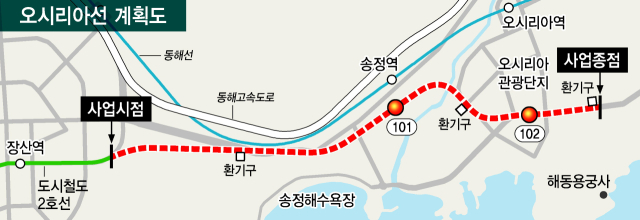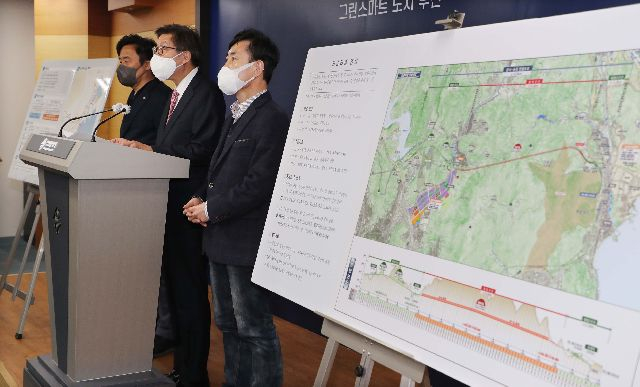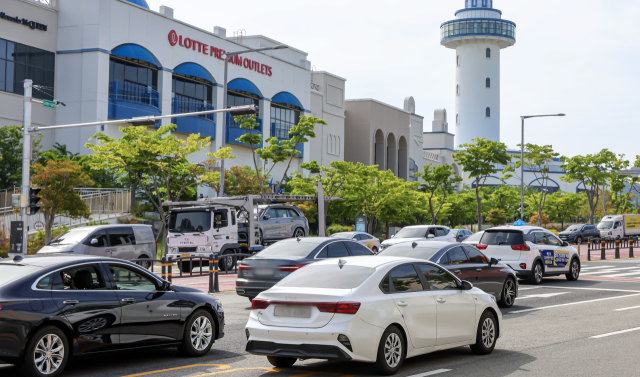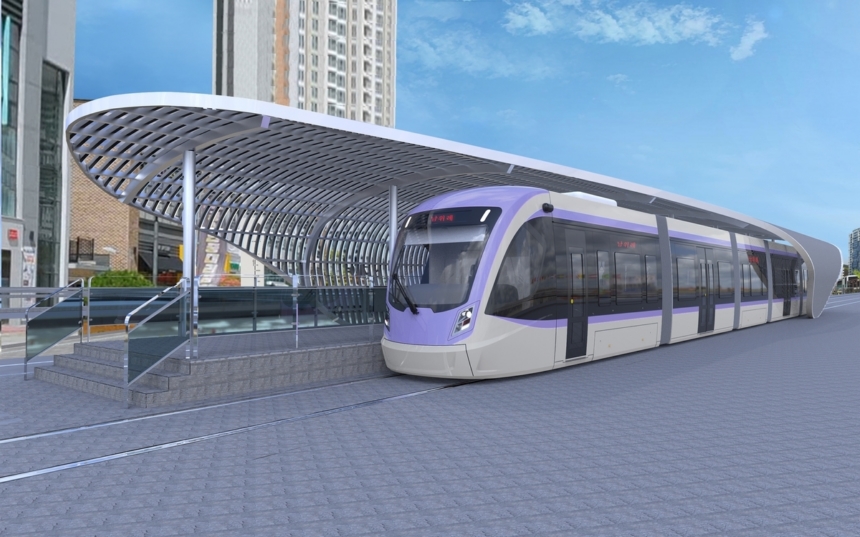Table of Contents
- Severe Traffic Congestion in Osiria Tourist Complex, Urban Railway Line 2 Extension Project at Risk
- From the Private Proposal in 2022 to Withdrawal in 2025...
- Opening Plan for 2029 Effectively Abandoned... Uncertainty Beyond 2030
- Osiria Tourist Complex, ‘Traffic Hell’ Every Weekend... Public Transport also Saturated
- Disparity in Railway Infrastructure Between Capital Region and Local Areas... A Reality That Can Only Make You Angry
- Conclusion: Osiria Line, Minimum Condition for Development in Eastern Busan
- Frequently Asked Questions (FAQ)
Severe Traffic Congestion in Osiria Tourist Complex, Urban Railway Line 2 Extension Project at Risk

The Urban Railway Line 2 Osiria Line extension project, which Busan City has been actively promoting, is facing significant difficulties.
Recently, the Ministry of Land, Infrastructure and Transport withdrew the viability study for the private investment proposal, effectively derailing plans for construction in the second half of 2025 and opening in 2029.
As a result, the future of major transport infrastructure aimed at solving traffic problems in the Osiria tourist complex of Gijang-gun in Busan has become uncertain, continuing to inconvenience the citizens.
From the Private Proposal in 2022 to Withdrawal in 2025...

The Osiria Line project officially began when Geumdong Construction submitted a business intention letter in March 2022. Consequently, Busan City requested a private investment viability study from the Korea Development Institute (KDI) in June 2023.
The project includes the extension of a 4.13 km section from Jangsan Station to the Osiria tourist complex and is planned with a total project cost of approximately 484.4 billion KRW through private investment methods.

The KDI’s viability assessment has already been delayed for over two years, and the Ministry of Land announced that it would suspend the private viability study procedures in July 2025. In the process, large-scale metropolitan transport projects such as BuTX (Busan Express Railway) have been prioritized, causing the relatively shorter Osiria Line to be pushed back, leading to difficulties in project progress.
Opening Plan for 2029 Effectively Abandoned... Uncertainty Beyond 2030

Originally, Busan had planned to commence construction in 2025 and complete it by 2029, but in the current situation where even the results of the viability study have not been released, the feasibility of achieving this goal appears slim. If the private investment project falls through, the city will need to convert it to a financial project; however, this has only been ranked 8th in the 'Busan Urban Metro Network Construction Plan,' making it difficult to secure impetus for progress.
As a result, the opening of the Osiria Line is likely to be delayed until at least after 2030, which will cause ongoing traffic congestion for residents of Gijang and Haeundae areas, as well as tourists. Thus, local traffic problems are expected to become even more serious.
Osiria Tourist Complex, ‘Traffic Hell’ Every Weekend... Public Transport also Saturated

The eastern Busan area connects Haeundae Jangsan Station to the Osiria tourist complex and is a popular destination visited by many citizens and tourists. This area is home to famous attractions like Haedong Yonggungsa Temple, Lotte World, IKEA, and luxury resorts, causing traffic congestion on the Donghae Expressway and Haeundae area every weekend.
While there is the Donghae Line for public transport, the intervals between services are long and there is significant congestion on weekends. One citizen who visited Lotte World from Yeonje-gu expressed dissatisfaction, stating, "I set off early in the morning to avoid traffic, but it took twice as long as expected." The transport issues in the eastern Busan area, which sees crowds on weekends, seem in urgent need of resolution.
The number of tourists visiting Busan has been continuously increasing. Particularly with more foreign visitors, the demand for transit on the Urban Railway Donghae Line is growing increasingly pressing. In this situation, the extension of the Osiria Line has become a desperate necessity rather than a simple option.
Disparity in Railway Infrastructure Between Capital Region and Local Areas... A Reality That Can Only Make You Angry

In the capital region, the extension of Incheon Subway Line 2 and the construction of trams connecting Wirye and Dongtan new towns are actively underway. In contrast, Busan is struggling to conduct even a 4 km extension smoothly. The rapid advancement of private investment methods has been thwarted, and the slow expansion of transportation infrastructure in local cities has rendered the concept of regional balanced development merely a slogan. This reality further highlights the imbalance between regions.
Through operating a real estate blog, I have recognized the strong dissatisfaction with the disparity in infrastructure investment between local and capital regions. While new towns in the capital region are continuously expanding the subway, Myeongji New Town in Busan has seen no progress in starting or extending the subway for already 15 years.
This situation acts as a cause diminishing regional competitiveness, which can negatively impact Busan’s real estate market in the long term. There is an urgent need for government efforts toward regional balanced development.
Conclusion: Osiria Line, Minimum Condition for Development in Eastern Busan

The Osiria Line is not just a simple transportation extension. It has become critical infrastructure for the coordinated development of the Osiria tourist complex and the Haeundae-Gijang area. Although the recent withdrawal of the private investment viability study is disappointing, Busan City and local political circles need to find new alternatives, such as transitioning to city-funded projects, to prop up the initiative once again.
For Busan to grow into a global city, expanding the urban railway network, which can satisfy both tourism and traffic needs, is essential. Such efforts will serve as the foundation for a brighter future for Busan.
#OsiriaLine, #BusanLine2Extension, #HaeundaeJangsanStation, #OsiriaTouristComplex, #BusanTrafficCongestion, #UrbanRailwayNetwork, #BusanUrbanRailway, #KDIviabilityStudy, #PrivateInvestmentWithdrawal, #GijangTrafficImprovement, #BusanLotteWorld, #IKEAPlace, #DonghaeExpresswayTraffic, #BusanSubwayExtension, #EasternBusanAttractions, #HaedongYonggungsa, #DonghaeLineCongestion, #BusanUrbanIssues, #LocalRailwayNeglect, #CapitalRegionTransportDisparity, #InfrastructureImbalance, #BusanRealEstateImpact, #2030BusanWorldExpo, #BusanCityTransport, #GeumdongConstruction, #BuTX, #OsiriaLineProjectCancellation, #BusanCityGovernment, #FromYeonsanDongToGijang, #BusanWeekendTraffic, #BusanCityCouncil
Frequently Asked Questions (FAQ)
Q. Why is the Osiria Line Urban Railway Line 2 extension project at risk?
This is because the Ministry of Land withdrew the viability study for the private investment project, nullifying the planned construction in 2025 and the opening in 2029.
The Osiria Line extension project, which Busan City was promoting, faced significant challenges due to the delay of the viability study by the Ministry of Land, Infrastructure and Transport after the private proposal in 2022, and the withdrawal of the private viability study in 2025. The Osiria Line project has been sidelined due to the priority given to larger projects such as Busan Express Railway (BuTX), and thus, the originally planned construction and opening schedule is now difficult to maintain.
Q. What is the traffic situation in the Osiria tourist complex and the eastern Busan area?
Severe traffic congestion and saturation in public transport occur every weekend.
The Osiria tourist complex, which includes famous attractions like Haedong Yonggungsa, Lotte World, and IKEA, attracts many visitors. Consequently, there is significant traffic congestion on the Donghae Expressway and Haeundae area, and the Donghae Line public transport has long intervals and is extremely congested on weekends. Both residents and tourists are facing major traffic inconveniences, necessitating urgent improvements.
Q. What are the plans for the Osiria Line project after the withdrawal of the private investment viability study?
If the private investment is cancelled, Busan City will need to transition to a financial project, and it is likely that the opening will be delayed until after 2030.
Currently, the results of the viability study have not been released, so the plans for construction in 2025 and opening in 2029 have effectively collapsed. Busan City must convert to a financial project instead of a private one, but it is ranked low in the urban railway network construction plan, making it challenging to secure momentum for progress. Thus, the project is expected to be delayed until at least 2030, and the traffic inconveniences for local residents and tourists will continue.
Q. What is the situation regarding disparities in railway infrastructure between the capital region and cities like Busan?
While the capital region actively pursues extensive railway extensions and new city infrastructure, Busan is experiencing delays in its extension projects, exacerbating the disparity.
The capital region is pushing forward with railway infrastructure expansions such as the extension of Incheon Subway Line 2 and the Tram between Wirye and Dongtan new towns. Conversely, Busan struggles to carry out even a 4 km extension smoothly, with private investment projects failing to materialize, leading to slow infrastructure development. This undermines regional balanced development, leading to decreased competitiveness of local cities and increased dissatisfaction among residents.
Q. Why is the extension of the Osiria Line important for the development of the eastern Busan region?
It is essential for balanced development by enhancing connections and improving transportation between the tourist complex and nearby areas.
The Osiria Line is not merely a transportation facility; it is key infrastructure for the coordinated development of Haeundae, Gijang, and the Osiria tourist complex. It caters to the increasing traffic demand from tourists and local residents, and contributes to strengthening Busan's status as a global city through urban railway network expansion. Therefore, despite the failure of private investment, Busan City should continue seeking alternatives such as transitioning to financial projects and maintaining its commitment to the initiative.